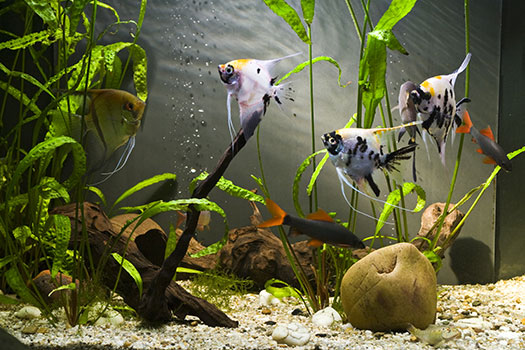- Your shopping cart is empty!
How to Choose a Filter for Your Fish Aquarium

When it comes to selecting fish tank equipment from an aquarium supplier, the filter will be the most important item on the list. Filters pull unwanted elements and toxins from the water, allowing the fish to survive in the aquarium’s micro-environment. The information that follows can help you select the right filter for your fish tank.
Types of Filtration
Biological – Beneficial bacteria form in the water that breaks down food and fish waste in stages. The process is referred to as the nitrogen cycle.
Chemical – Unwanted elements, in many cases, cannot be broken down through the biological process. Chemical filtration is used to leach undesirable content from the fish tank.
Mechanical – This process uses the filter system to physically remove debris from the fish tank. Animal waste, plant debris, and sand is pulled from the water as it flows through the filter.
Filter Media
All filtration methods are performed using various filter media. Each type of media performs one or more of these methods. Most filters are capable of using several media.
Filter Types
Canister – The canister is pressurized and pumps the water through the filter media. These types of filters provide excellent mechanical filtration, can handle large volumes of water, and are preferred for use in larger tanks. A canister filter operates efficiently in freshwater or saltwater tanks.
Internal – This category includes box and sponge filters. Most models require an air pump for operation. Box filters are often filled with media that aid in chemical and mechanical filtration. Sponge filters provide biological (and limited mechanical) filtration. Their limited water flow capacity finds them placed in smaller tanks, as well as breeding and quarantine aquariums.
Power – Also referred to as hang on back filters, these devices can provide all three filtration methods as well as excellent biological filtration, especially with a bio wheel. Due to the water agitation and salt creep they cause, they are not recommended for saltwater aquariums.
Undergravel – Undergravel devices are placed under the tank’s substrate and are powered through air stones or a power head. They provide mechanical and limited biological filtration, they can be used in non-planted tanks, and their large surface area is popular among saltwater enthusiasts.
Wet/Dry – These multi-chamber devices make use of a sump to clean the water, can perform all types of filtration, and can employ protein skimmers. They can handle large amounts of fish and are preferred by many saltwater fish keepers.
If you’re looking for high-quality aquarium and pond filters, get in touch with Aquatic Warehouse today. We offer all the supplies you’ll need for your saltwater or freshwater fish tank. Visit our website or give us a call at 1-858-467-9297.
